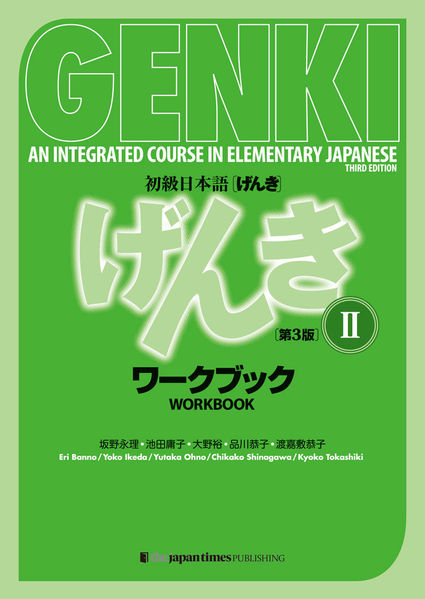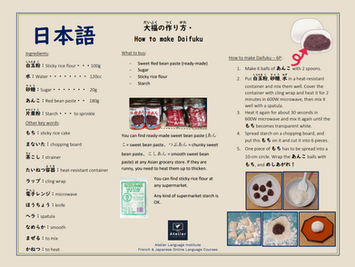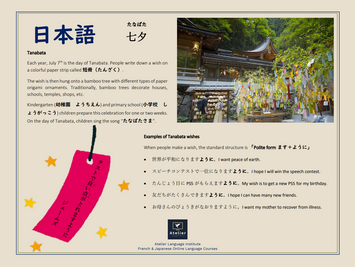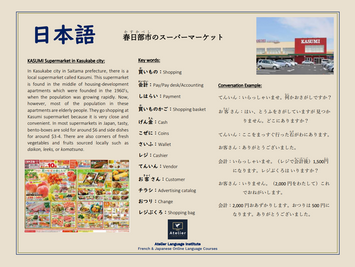
VCE Japanese Tutoring
In VCE Japanese lessons, we focus on developing your language skills through grammar, writing, expression, kanji, speaking, while always endeavoring to understand Japanese culture and use intercultural communication. We base our content and skills on the VCE Japanese study design.
Here are examples of what we do in class:
-
Grammar: we rectify common language mistakes, provide clear explanations and examples, and use grammar in context
-
Writing: we look at written homework and discuss the corrections. We provide situations and scenarios to build students' abilities to write accurately based on features of a variety of text types
-
Expressions: new expressions are learned and revised regularly. Students get to understand the richness and variety of Japanese expressions and their correct use
-
Kanji: we practise kanji recognition and writing, learn the various 'kun' and 'on' readings, and study the necessary kanji radicals. Kanji are used in contexts
-
Speaking: pronunciation is perfected through repeated and/or varied conversations. Correct words, grammar and expressions are used around VCE-based topics (life in Japan, culture, social issues, etc.).
Our approach is to put priority on the student's request, level and objectives. The content or focus of each lesson can be arranged depending on the student's demands.
We can use textbook resources as well as internet resources which will be discussed and chosen with the teacher.
How a week runs:
-
Lessons are run online
-
Between lessons, the student uploads his/her homework activities
-
Homework activities are corrected during the week
-
Resources, articles and other media are also shared during the week
Sample of Weekly Activities
Topic: School Life
Week 1
Learning objective: Introducing your school and school life in Australia
オーストラリアの学校と 学校の生活について しょうかいしましょう。
Linguistic focus: Vocabulary of school, education, and co-curricular activities
-
Revising the difference between Na-adjectives and I-adjectives
-
Building sentences and practice using past/present/future tenses
Activities: Discussion about schools in Australia and schools in Japan
-
Reading of a descriptive text about the typical day of a Japanese high school student
-
Revision of adjectives in context: description of Japanese schools and students
Homework: Write a personal letter to introduce your school to Japanese high-school students
Week 2
Learning objective: Talking about courses, school subjects and pathways
学校のじゅぎょう、かもく、しょうらいのしんろについて 話しましょう。
Linguistic focus: Vocabulary of courses, subjects and pathways
Conjunctions to describe a typical day in a school or university
Situation: requesting information about courses using Te-form
Activities: Reading a journal entry of a Japanese student describing his/her day
Discussions about your day at school + why you chose certain subjects
Role play: you request information from a Japanese university.
Situation: you are the prospective student and your teacher is a receptionist of the university
Homework: Write the script of a dialogue between the student and the receptionist.
Situation: the student wants to study Japanese history, Japanese culture and be part of the anime club.
Week 3
Learning objective: Specificities of the Japanese education system
日本の教育システムについて学習しましょう。
Linguistic focus: Informative text: the newspaper article
Exercises with verb stems: stem + にくい、stem + やすい、stem + そうです、stem + すぎます
Activities: Analyzing visual data/documents to understand the Japanese school system
Homework: Write a blog entry to describe and evaluate the Australian secondary education
Recommended Resources
About Our Japanese Lessons
Days and times of lessons:
-
Monday to Friday: 4pm to 9pm
-
Saturday: 7am to 1pm
Advantages:
-
Possibility to organise mini-speaking sessions throughout the week
-
Personalised lessons via Google Meet
-
Maximisation of student speaking time during lessons
-
Access to a variety of recorded and shared resources
-
Possibility to contact teacher between lessons for clarification and correction of written/oral work
-
Advice and strategies on how to approach SAC and the VCE examination

















